It was a rookie, flatlander mistake.
In the euphoria of contemplating our first major trip since the start of the pandemic, a bargain-basement sale on flights, and the lure of the Rocky Mountains beckoning with their snow-capped peaks and turquoise glacial lakes, I got caught up in the moment and pulled the trigger! One click on the computer and Henk and I were going to Alberta for the first two weeks of June, and the months between couldn’t pass soon enough, I thought excitedly!
That was four months before departure.
And then I did the research that I should have done before pulling out that credit card.
Rookie Mistake
It turns out that mountain weather is very different from Ontario weather, in particular their seasons and when summer in the Rockies actually starts. Up until now, all my initial research had been focused on finding pixel-perfect landscape locations in Waterton, Banff, Lake Louise and Jasper, carefully avoiding the July and August high season for its accompanying crowds. (I’m no dummy, after all.) But I hadn’t even considered whether there might still be snow in Alberta in June! Here in the ‘flatlands’ of Ontario, there are no mountains – or snow – in June.
But snow there was in Alberta this year. Not everywhere, to be clear, but whenever we were at higher elevations, there was still snow. So much snow, in fact, that roads and trails were closed near Banff. The hotel wasn’t even open at the world-famous Moraine Lake. A lake cruise to photograph the iconic Spirit Island was cancelled in Jasper. And those turquoise glacial lakes? Half empty or in some cases, half frozen.
Boarding the plane with our non-refundable tickets on the first of June, I couldn’t help but think, had I made the biggest blunder and ruined our trip before it had even started?
But here’s the thing about Mother Nature. Sure, she can be a real b*%ch at times, but just as she taketh away, so she giveth as well. Because our photographic safari in search of turquoise lakes and majestic landscapes instead turned into the greatest Canadian safari I could have imagined. All thanks to that same snow. And the mountains themselves? Turns out they are beautiful all the time. Stunningly beautiful, in every season.
So, Why So Snowy, Alberta?
It turns out that the winter of 2022 had been crazy, not just for all of us humans trying to navigate the latest in Covid protocols and variants, but for the Rocky Mountains, too. The winter had brought snowfall levels that locals hadn’t seen in years, and spring sort of arrived but much colder and later than usual, delaying the usual spring melt even further.
The Upside of a Snowy Spring in Alberta: a Stellar Canadian Safari
With all that snow still hanging around, animals were finding it tough to forage in the higher elevations. And that became our wildlife windfall: we saw deer, elk, bighorn sheep, black bears, grizzlies and even mountain goats that were all forced to move to lower elevations to find food. And the farther north we went, the more wildlife we saw.
Our Canadian Safari Begins
The first inkling of our safari-to-come began en route to Waterton Lakes National Park, where even before entering the park Henk spotted this raptor hunting in a field, and captured him when he stopped to take a breather on a rail fence.
Just inside the Park entrance, bighorn sheep greeted us right on the road into the town, in the parking lot and on the trail when we went back a half hour later to hike the Bear’s Hump Trail. During our stay we noticed deer walking through the little town regularly in the morning and at dusk.
On our lake cruise, our boat captain, Mike, spotted a bald eagle on the top of a tree on shore, which Henk caught in his camera to add to our growing list of ‘Waterton Wildlife Spotted’.
And when we drove north out of Waterton several days later, because it was elk calving season, we were lucky enough to see a huge herd of elk, including many babies (although they were at a distance and kept it that way to protect their calves).
Banff’s Wildlife Bonanza
Our next stay was in Banff National Park where our unplanned Canadian safari continued right in the town itself: we saw young mule deer ‘hedge-trimming’ at residents’ homes, and not far from the iconic Banff sign, more mule deer munched in the trees and seemed to willingly pose for Henk’s camera (much like we had).
Even the familiar wildlife turned out to be not-so familiar here. What I initially thought was the biggest chipmunk I had ever seen in my life (causing me to wonder just what they were eating here!) turned out to be a “golden-mantled ground squirrel” which was easily double the size of its little Chip’ n ‘Dale cousins.
One evening, our search for the perfect Banff overlook landed us another bighorn bonanza. We had headed outside of town halfway up to Banff’s Mt. Norquay ski hill where there was a large meadow that offered great views of the town and surrounding mountains. The weather didn’t cooperate for a sunset photograph, but we soon realized we were sharing the meadow not just with other sunset-seeking locals, but with a large herd of bighorn sheep as well.
Contentedly ‘mowing the grass’ just a few dozen metres away from us, we kept a safe distance but were able to watch the herd and grab some photos.
TIP: The Mt. Norquay overlook is a great spot if you are looking for a great view of Banff with no admission fee. And judging by the amount of sheep droppings, if you do visit, it’s likely you’ll see bighorns here often.
Keep Your Eyes Open on the Drive to Lake Louise
Wildlife is taken very seriously on the Trans Canada Highway that runs between Banff and Lake Louise. So seriously, in fact, that the Park has gone to great lengths to protect animals from the vehicles that pass through here. For starters, the multi-lane highway is fenced on both sides to keep even large animals like elk and moose from wandering into the paths of vehicles, avoiding accidents that could be fatal for both animal and human. And to protect the wildlife corridors that run through the park, multiple under-highway tunnels were constructed, as well as six overhead animal bridges to allow safe passage across the lanes. Not only are these bridges safe and functional, they are also aesthetically beautiful and planted with trees and vegetation to mimic the natural landscape.
However, when you venture off the Trans-Canada onto some of the smaller highways in Banff, including the scenic 270-km long Icefields Parkway that extends all the way to Jasper National Park, there are none of these wildlife fences or bridges. Which means you’ll need to keep your eyes open to watch out for any wildlife that may approach the road. On the upside, this means you will be actively looking for wildlife, which is half the trick to seeing any. And you might luck out like we did, when we spotted this black bear beside a stretch of the Bow Valley Parkway near Lake Louise.
Jasper, Alberta Was a Canadian Safari Highlight
When we got to Jasper National Park, our continuing wildlife safari only got better: we couldn’t take a drive to or from the Overlander Mountain Lodge where we were staying without seeing animals both ways.
We saw mule deer, elk and bighorn sheep literally beside us on the highway, and on smaller roads near the town of Jasper.
Henk somehow even managed to spot mountain goats at the top of a hill just north of the Park entrance – while driving, no less. (Trust me. with snow still on many peaks, it wasn’t easy to differentiate goats from ice patches on distant slopes.)
On another day we decided to drive to Maligne Lake, even though our lake cruise to Spirit Island had been cancelled two weeks previously because of lingering ice on the lake. That misfortune turned into a wildlife bonanza: we spotted two moose (one going to and one returning from the Lake), a black bear that kept pace with us as it loped through the forest beside the road, and even nesting osprey and eagles closer to Medicine Lake.
Grizzlies for the Win!
Our Canadian safari highlight, however, happened in Jasper one evening. We had just finished dinner and were driving to Pyramid Lake to check out the sunset views on the lake when we spotted another car with its hazards on (a good sign they had stopped for wildlife). The driver told us he had seen 3 grizzlies, so we followed his car down the same road and sure enough, there they were: a mother and 2 juvenile cubs, probably a year old at least, judging from their size.
The only other time Henk or I had seen a grizzly was in the Yukon, when we were lucky enough to spot a young adult contentedly munching on berries right next to the highway. But this group of grizzlies seemed to be on a fast-foraging mission tonight: it was amazing to watch these three huge animals hopping over logs and moving so quickly through the forest despite their bulk.
What was even more interesting was that all three bears were a different colour! ‘Mom’ was brown, one cub was grey/black and the third was almost blonde! I thought for a moment this blonde one might actually be a Spirit Bear, but learned later that grizzlies – and black bears, too – can come in more than one colour (who knew?).
DID YOU KNOW? ‘Spirit Bears’ are Kermode bears, a sub-species of the American black bear. A small percentage of their population are born white due to a genetic anomaly, but they are not actually albinos, as they do have pigment in their skin and eyes. They are most likely to be found on three islands in British Columbia (Gribbell, Princess Royal, and Roderick) where they make up about 10-20% of the bear population.
WHEN IT COMES TO A ‘CANADIAN SAFARI’ , TIMING IS EVERYTHING
Like everything else in nature, timing is everything, whether you are talking about the weather (especially in the mountains), or whether or not you may see a wild animal. Which of course means that even if you plan to go to Alberta hoping for a Canadian safari experience like ours, there is no guarantee that you will see any or all of the animals you hope to. Our particular timing for our visit to the Rockies coincided with a high snowfall winter and cool, late spring, which I initially thought would be a huge disappointment. Instead, it was one of the most memorable trips we’ve taken, even if it wasn’t for the reasons I has planned.
Turns out my booking blunder was one of the best mistakes I’ve every made.
TIPS FOR SAFE WILDLIFE VIEWING
SIGNAGE:
When you are driving through wildlife areas like Banff and Jasper National Parks, you are likely to see animal crossing/caution signs along the roadways with reduced speed limits in these areas. OBEY the signs! Especially at night. Park experts know where wildlife corridors are, and post these signs where you are more likely to encounter wildlife on the road, so stay alert.
SMALLER HIGHWAYS:
Secondary roads or highways likely do not have fences to keep animals off the road. (The Bow Valley Parkway, and Icefields Parkway are just two in the Banff/Jasper corridor.) Even if there are no wildlife caution signs, keep an eye out, especially at dusk and in the evenings.
STAY IN YOUR CAR:
If you do spot wildlife, always stay in your car. These animals can be dangerous, even ones that appear ‘docile’. It was calving season when we visited in June, and elk can become very protective and aggressive when they have young. Not to mention bears. If you encounter wildlife while hiking, keep your distance if you can. For specific ‘bear aware’ tips, check out Alberta’s bear safety tips.
AVOID ‘BEAR JAMS’:
Traffic jams caused by multiple cars stopping to watch wildlife/bears put everyone at risk. Pull over safely well off the highway to observe animals, with your hazards on. Never stop or block any lanes, unless the animal is on the road, at which point using your hazards is even more important to alert other drivers and keep everyone safe until the animal moves off.
NEVER FEED WILDLIFE:
It encourages potentially dangerous interactions between animals and humans, messes with the animal’s natural diet and is actually illegal in Canada’s national parks.
LOOK:
The more you are looking for wildlife, the more chances you will see some. So put down the phone and spend some time looking on the sides of the road. You’ll be surprised how much you see, including some pretty breathtaking scenery!

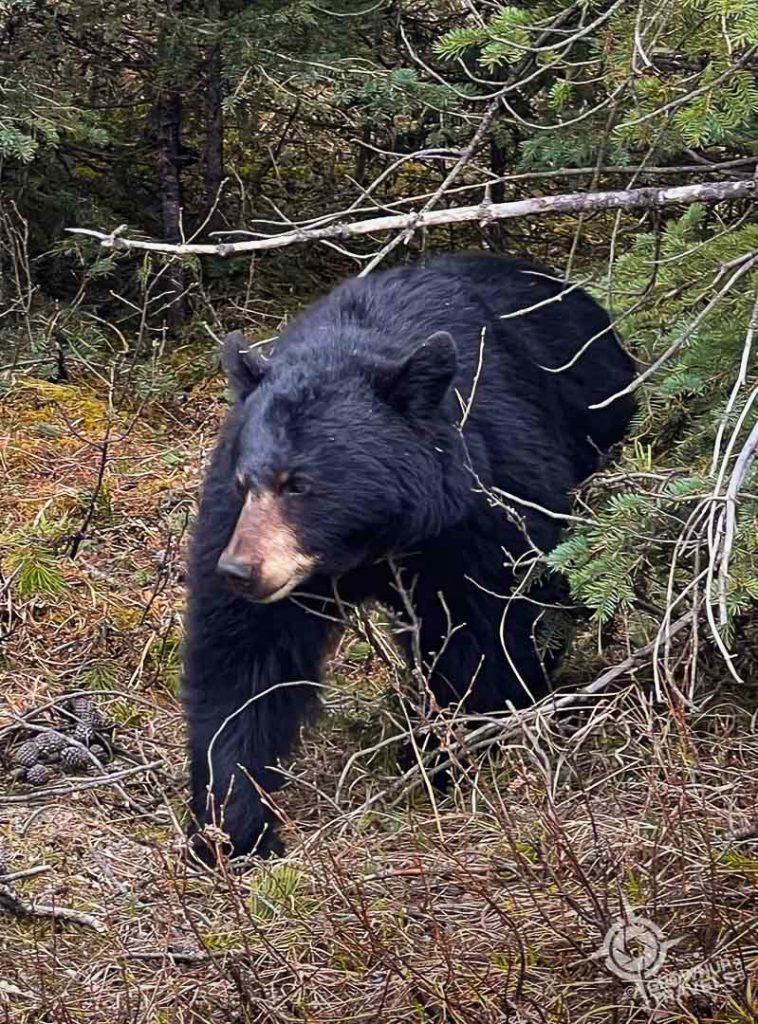
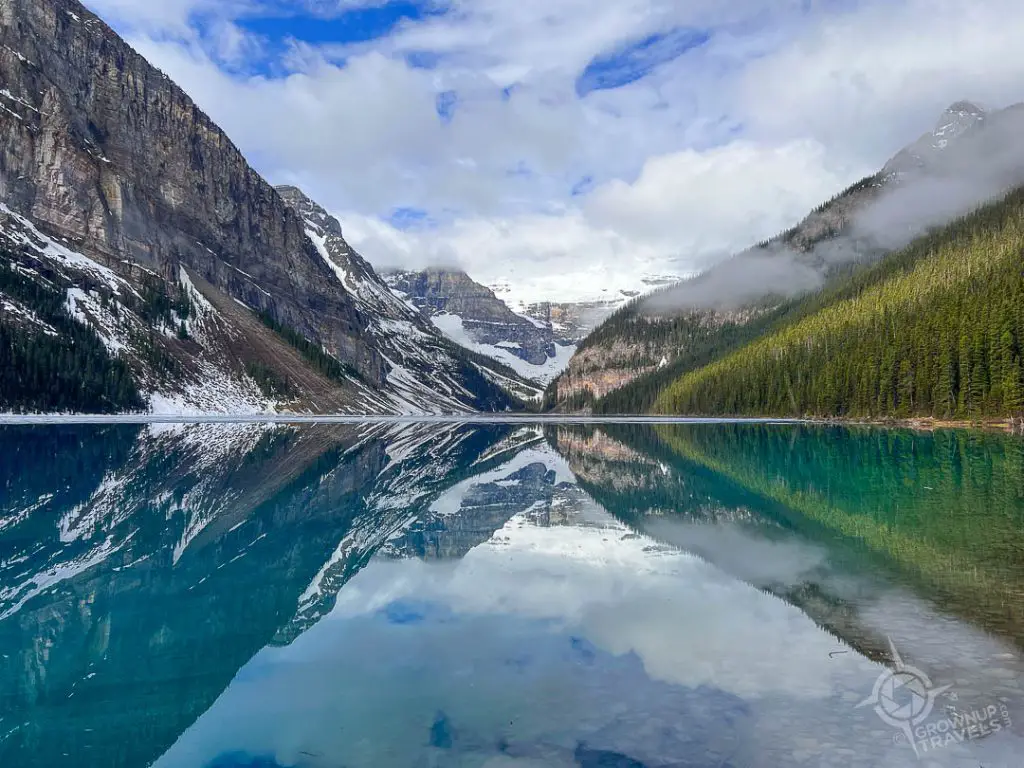
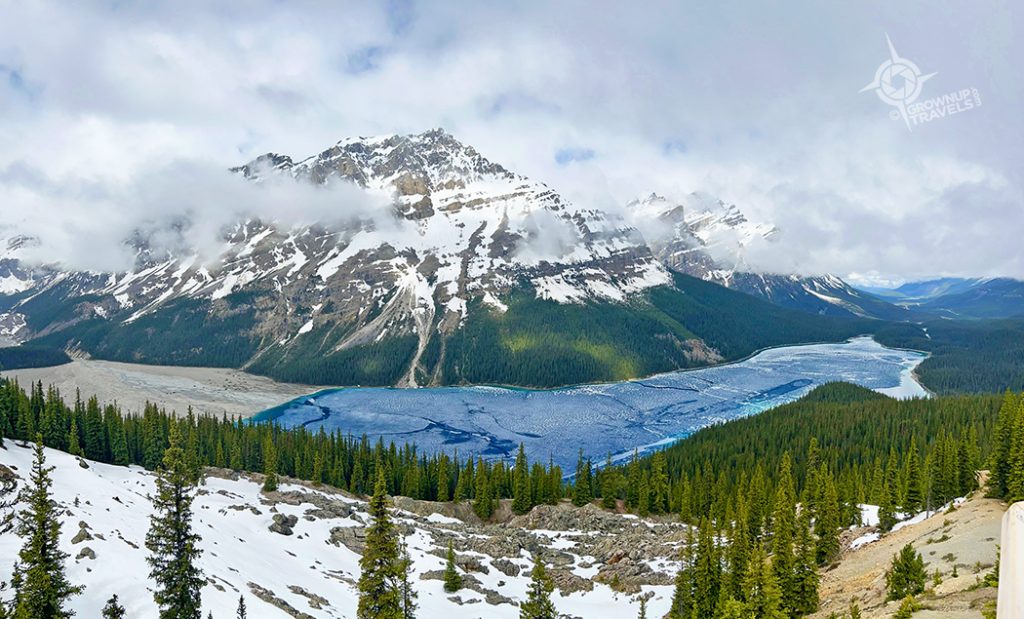
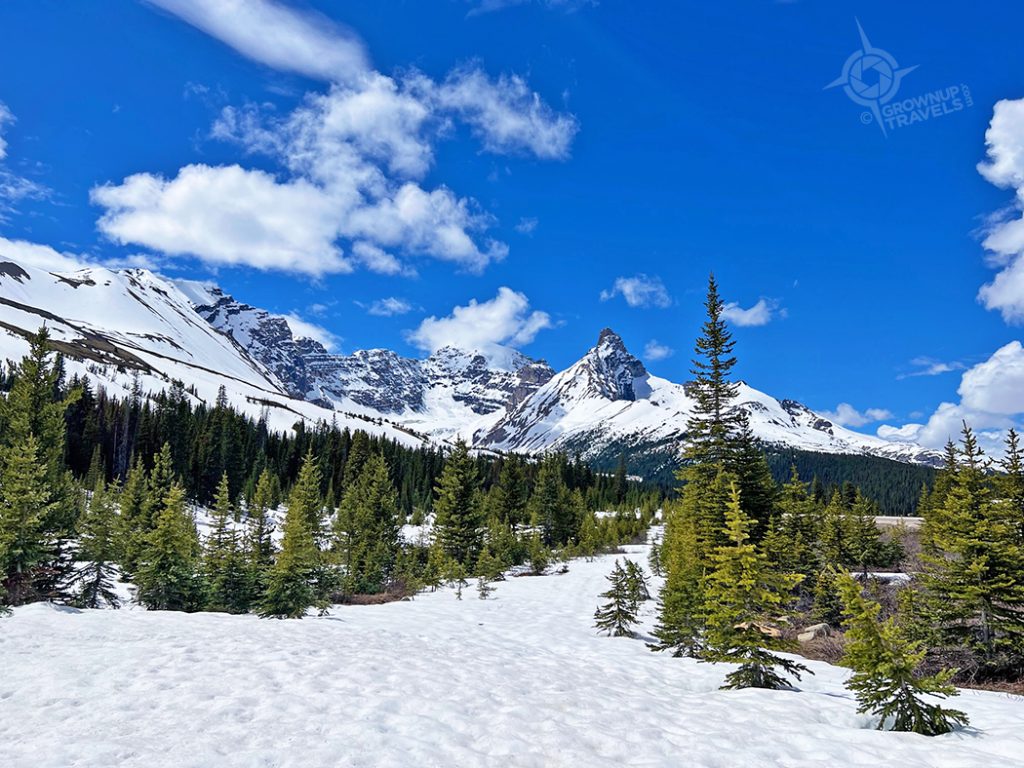
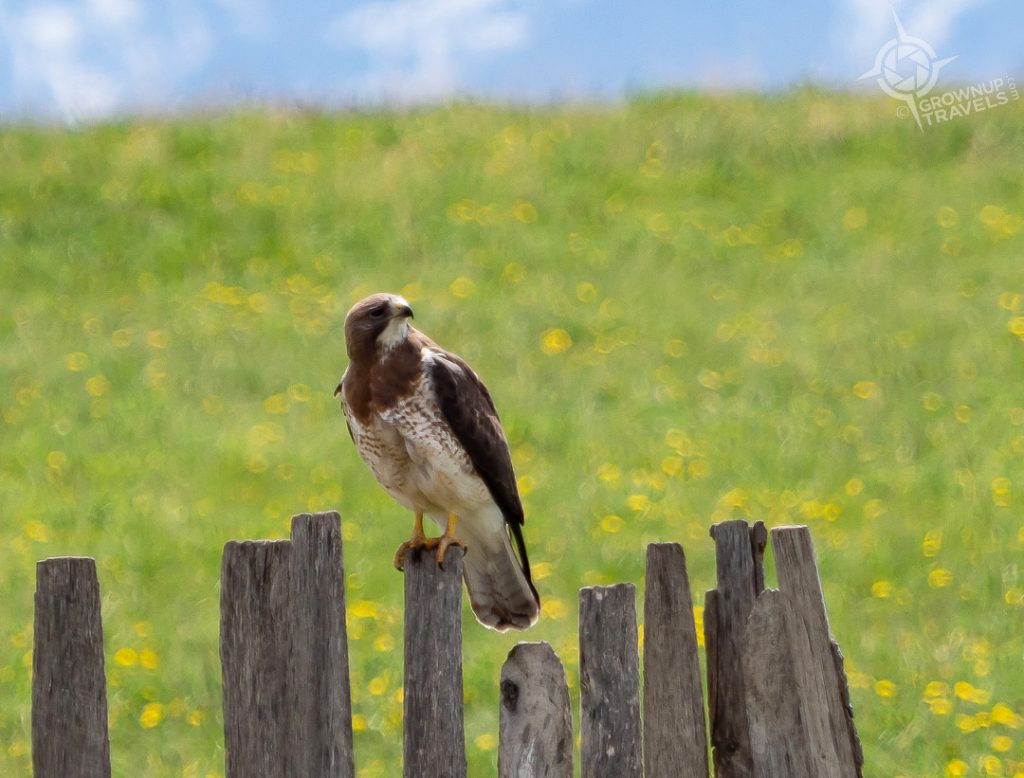
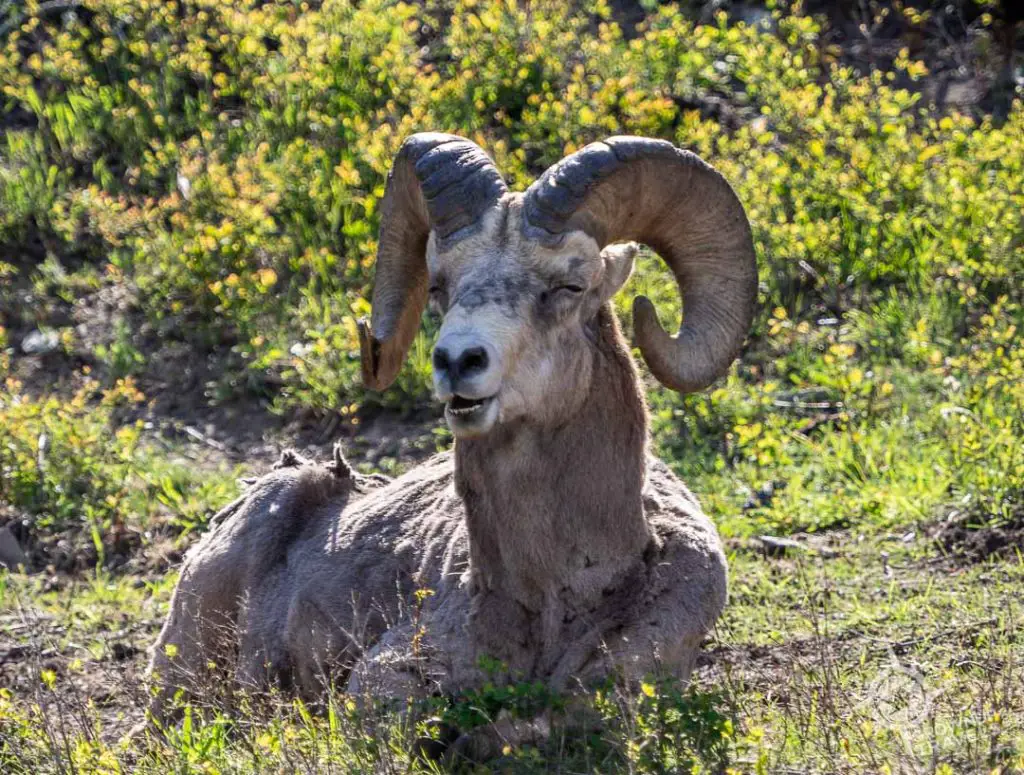
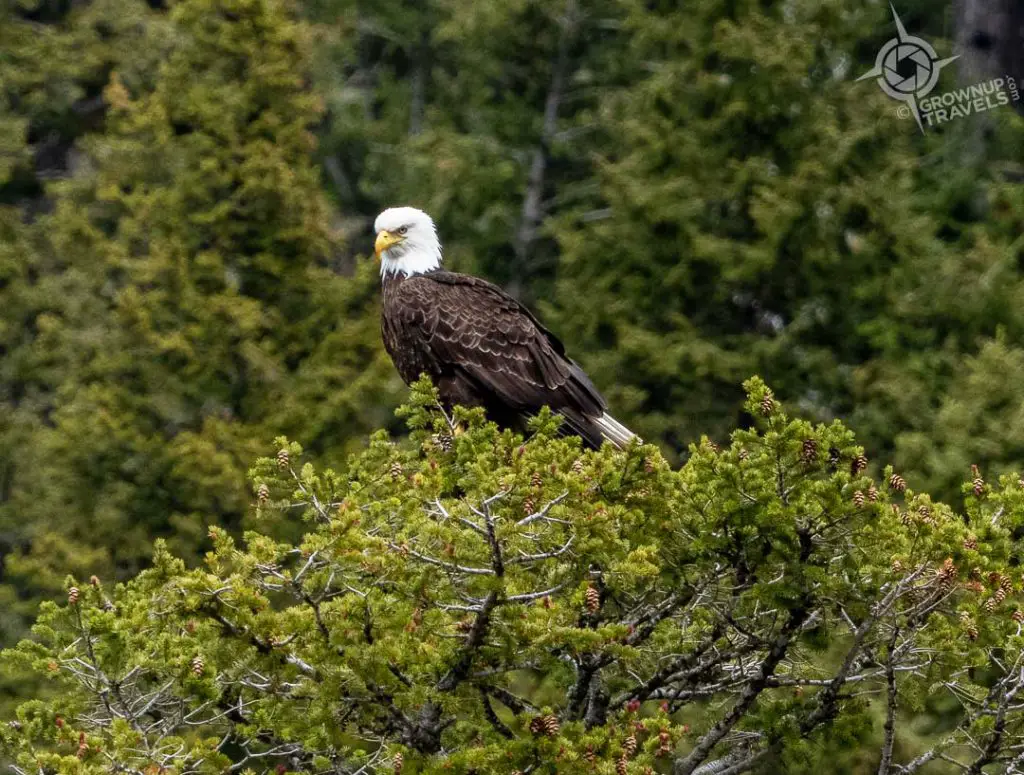
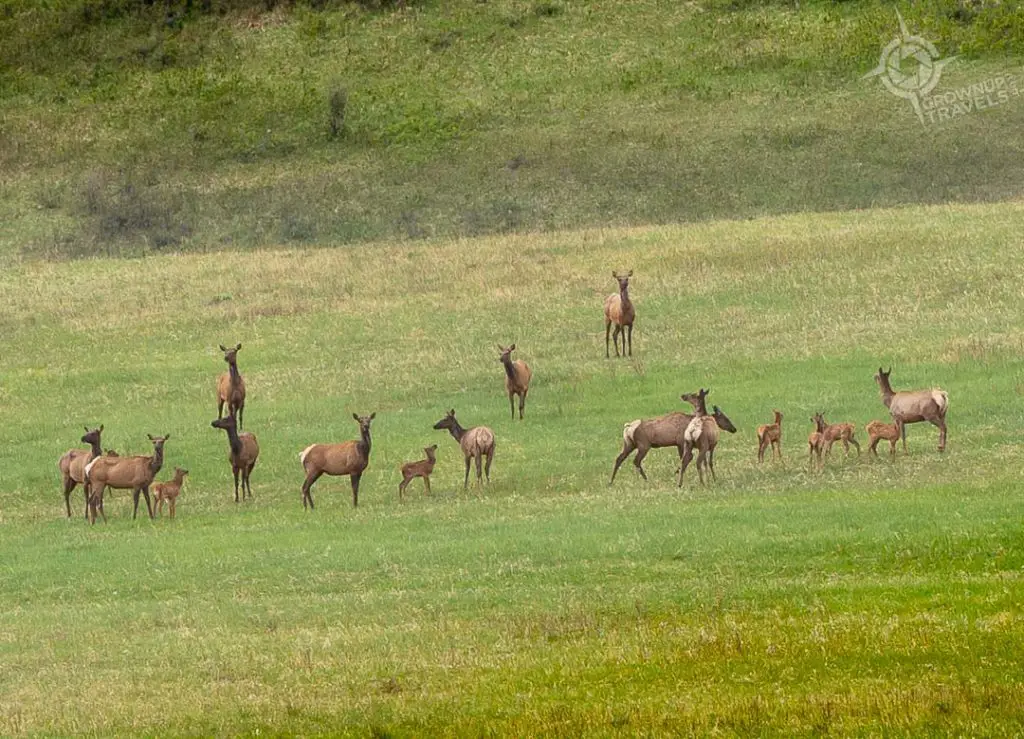
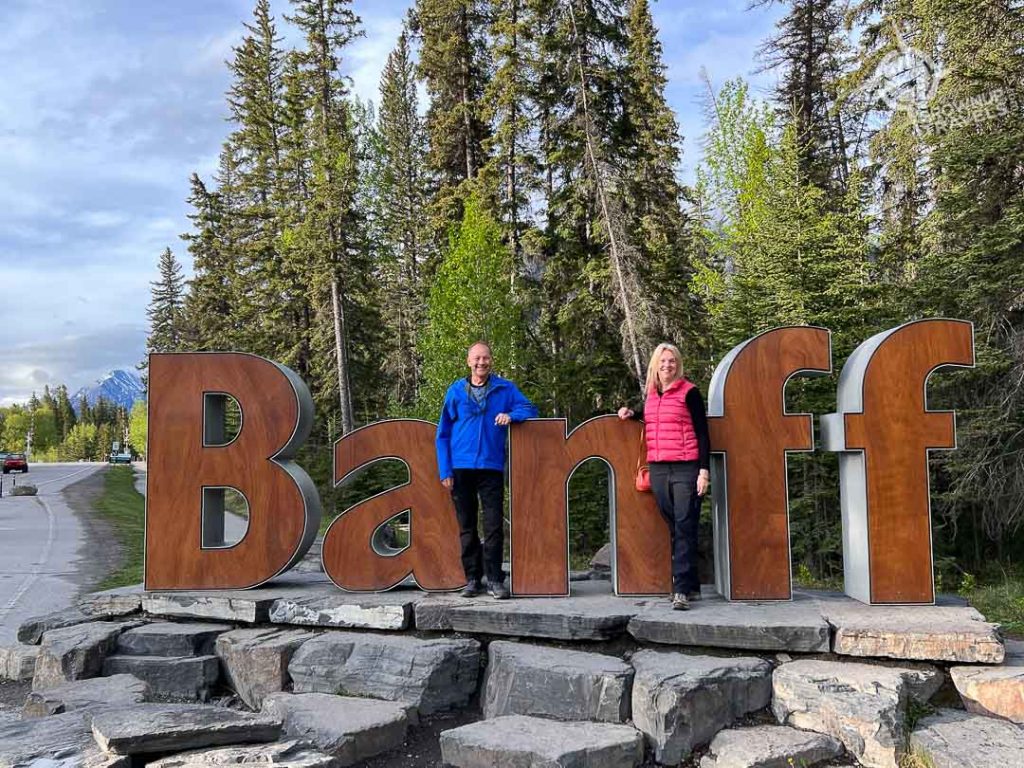
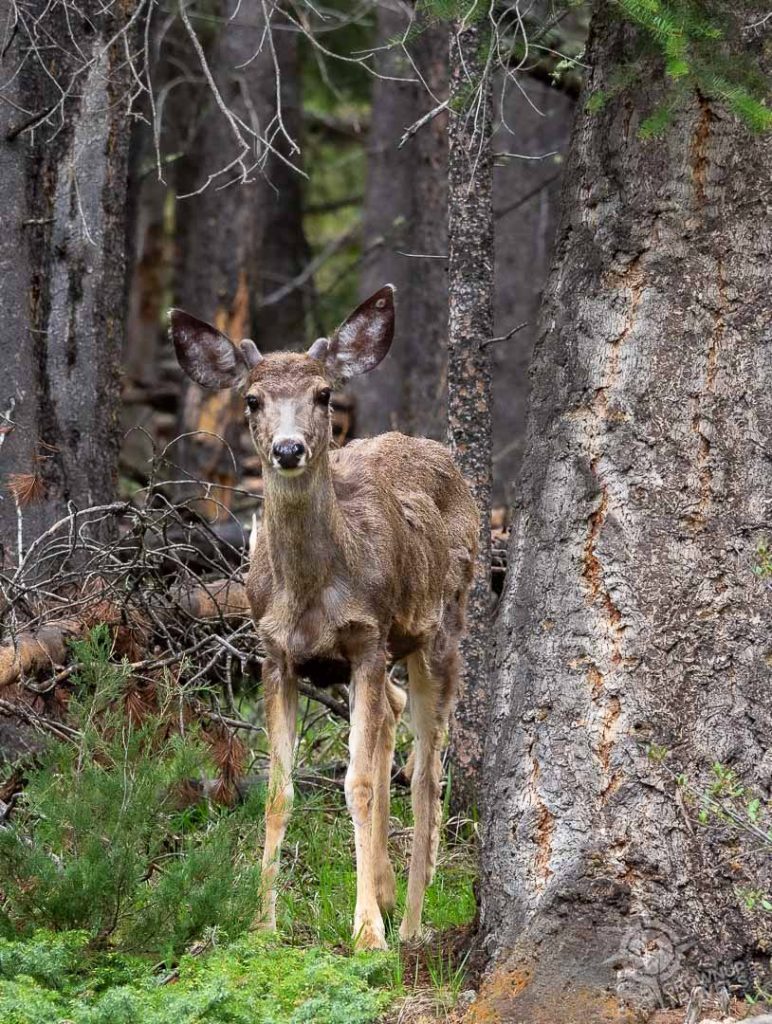
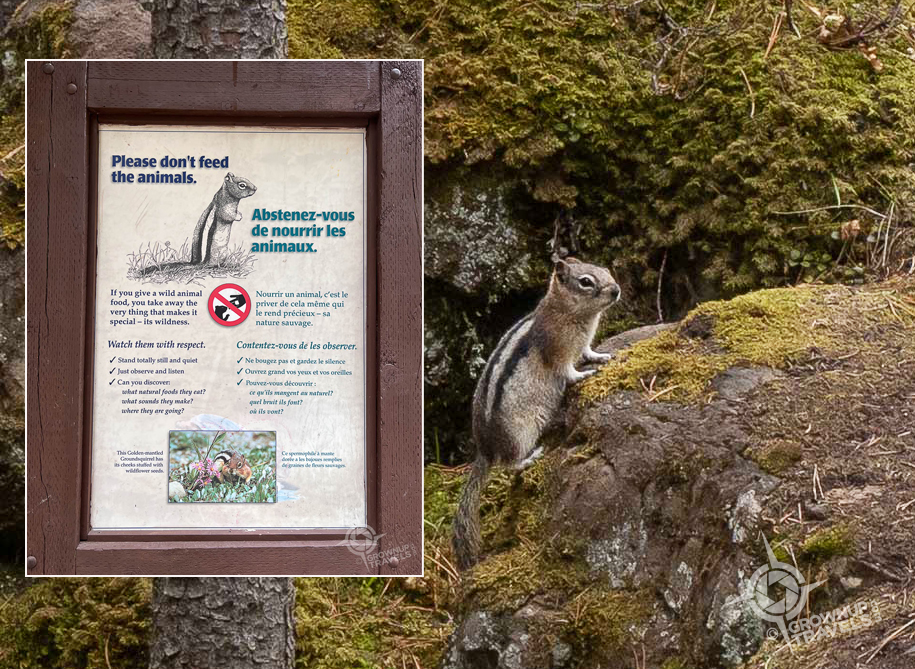
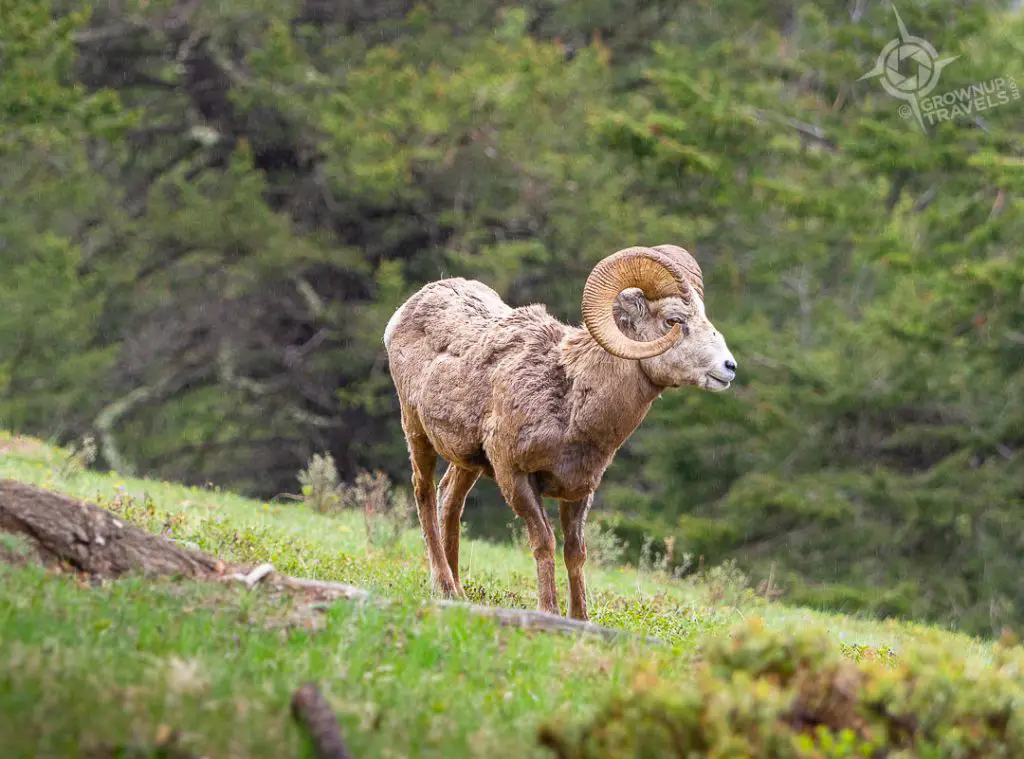
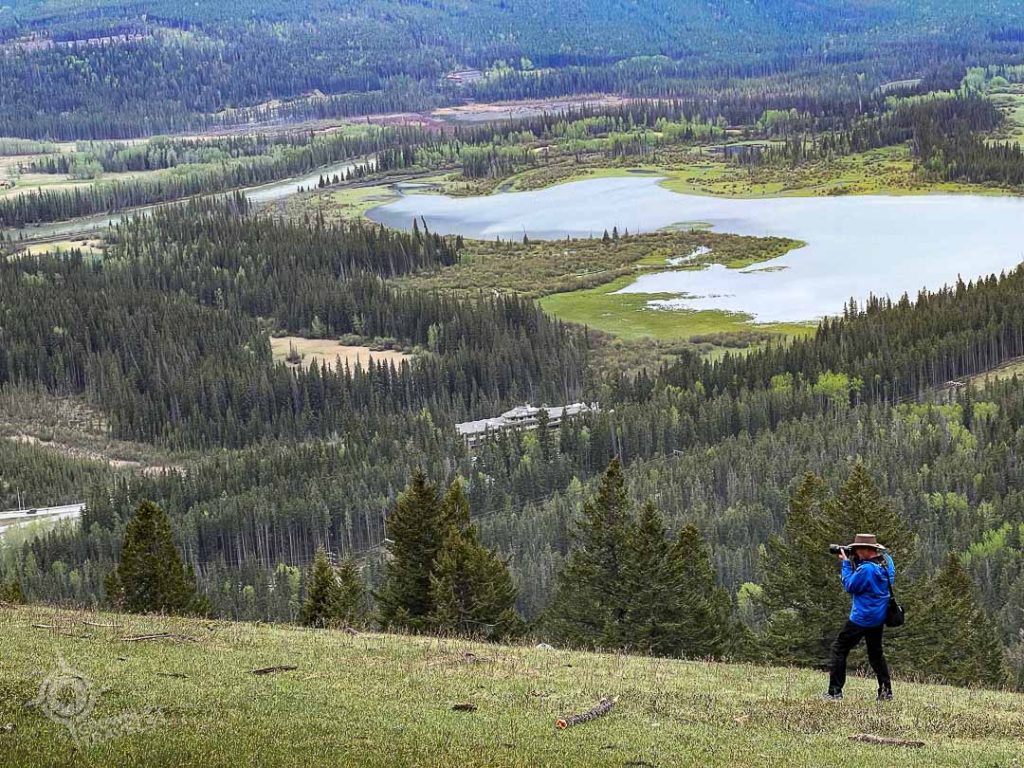
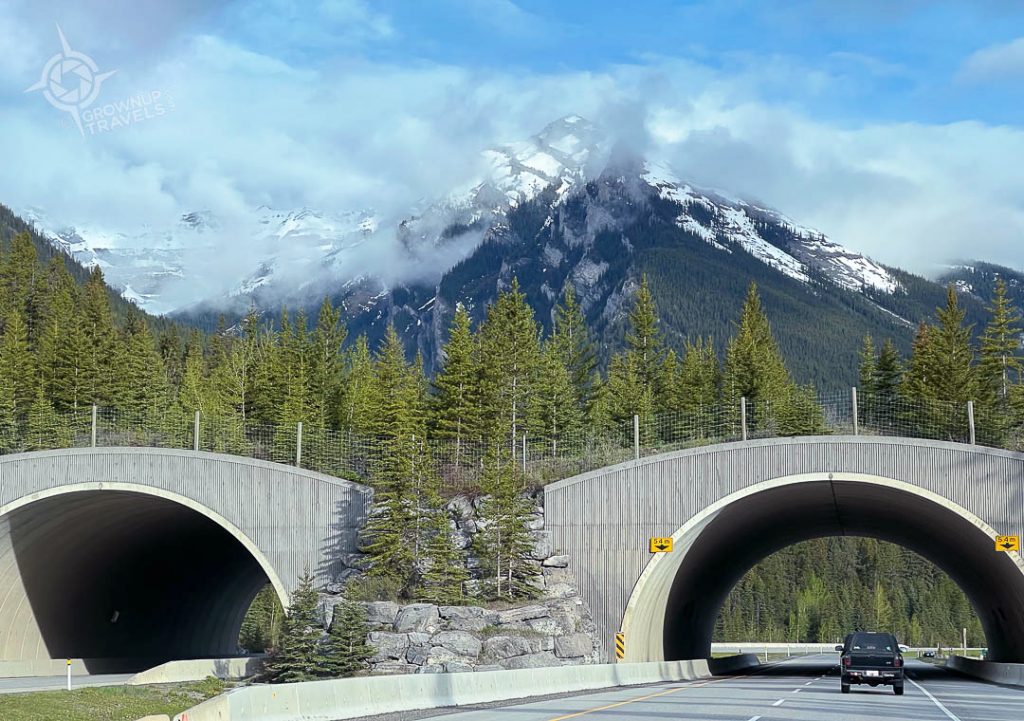
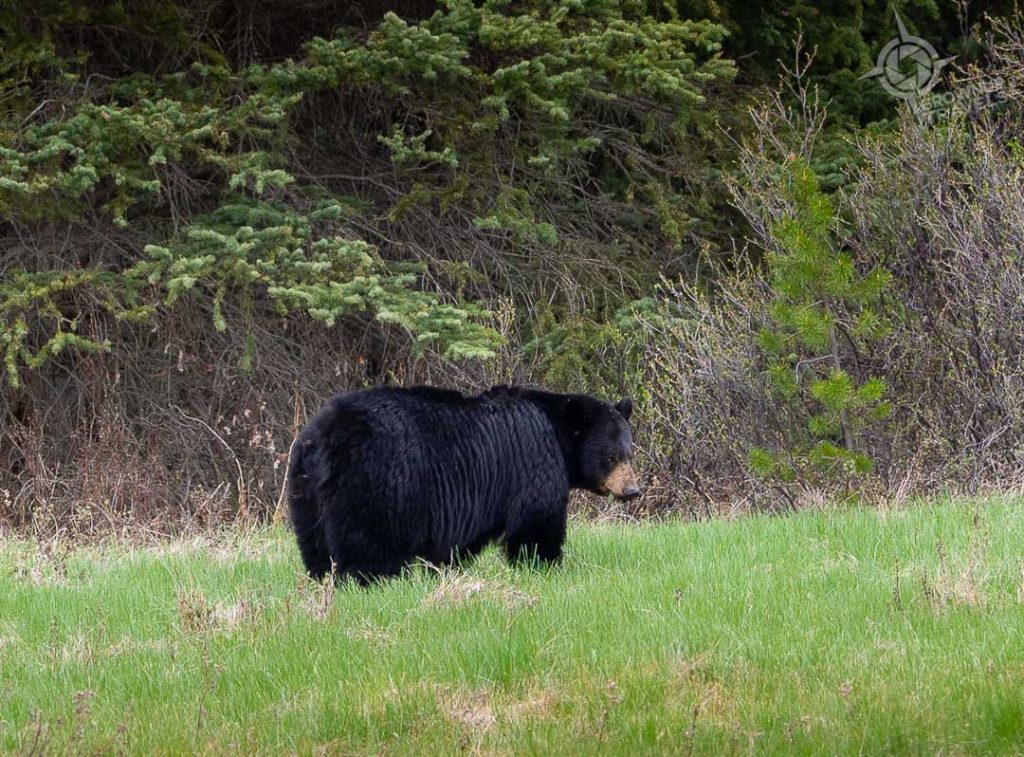
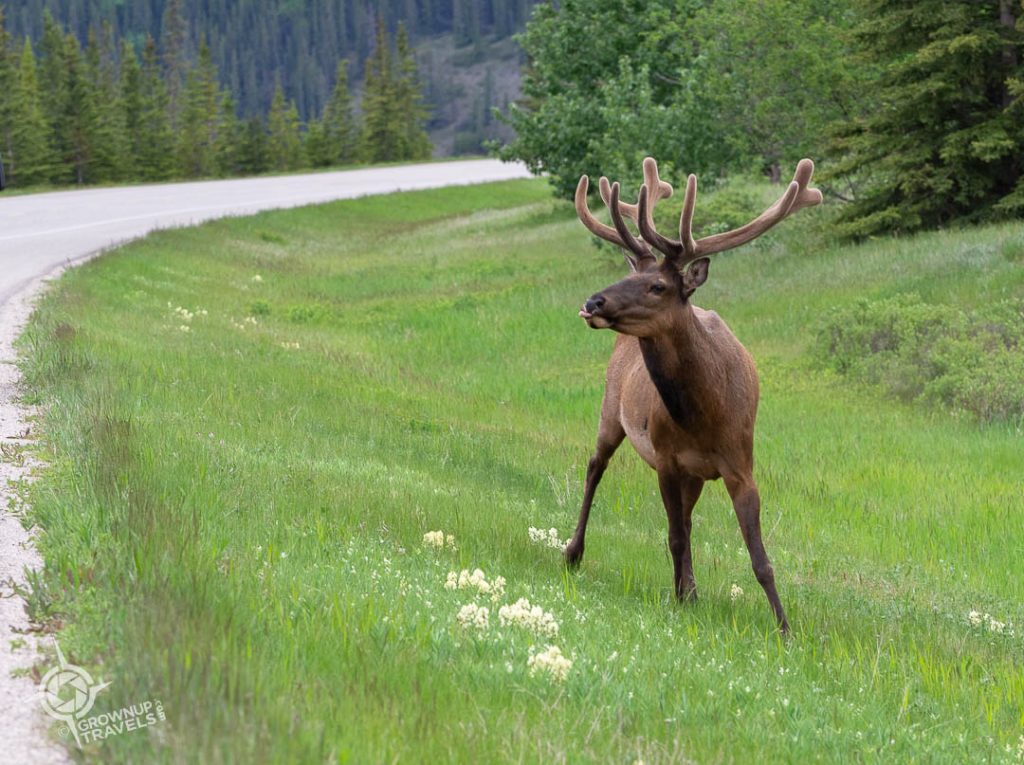
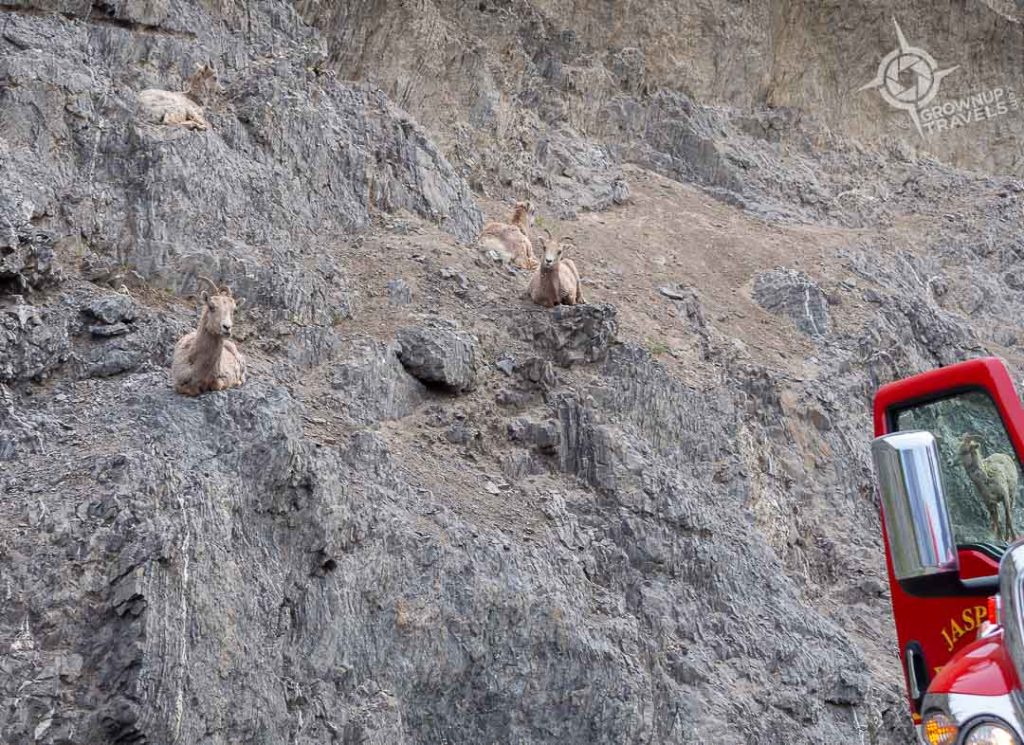
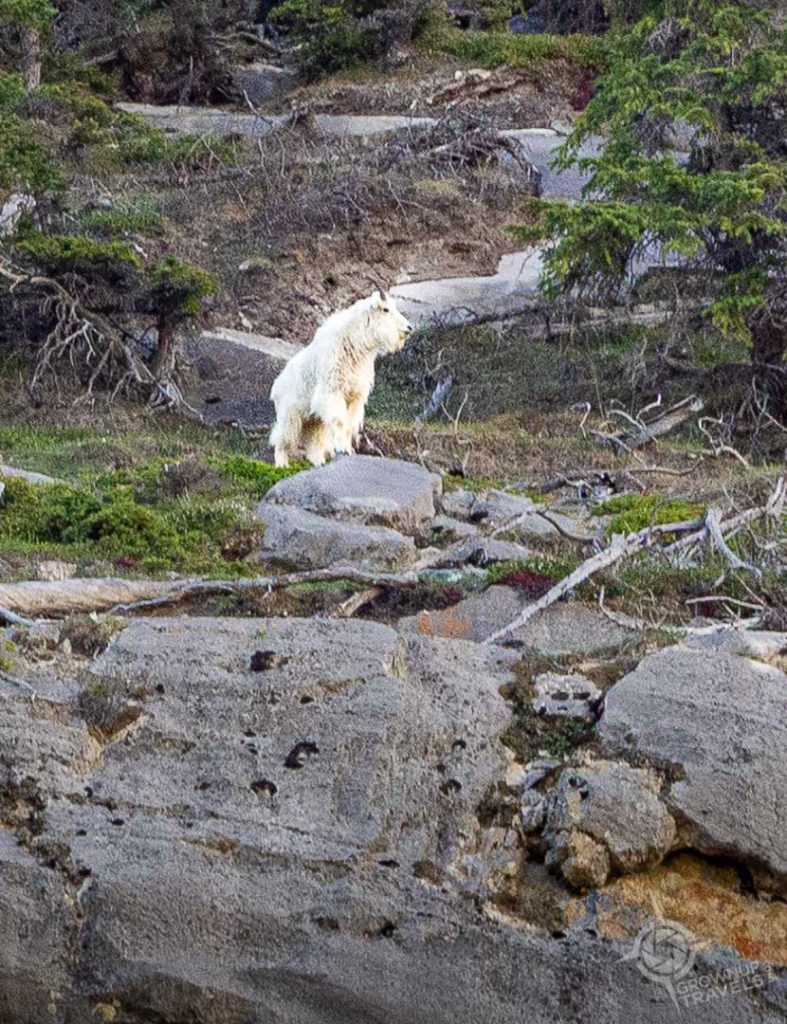
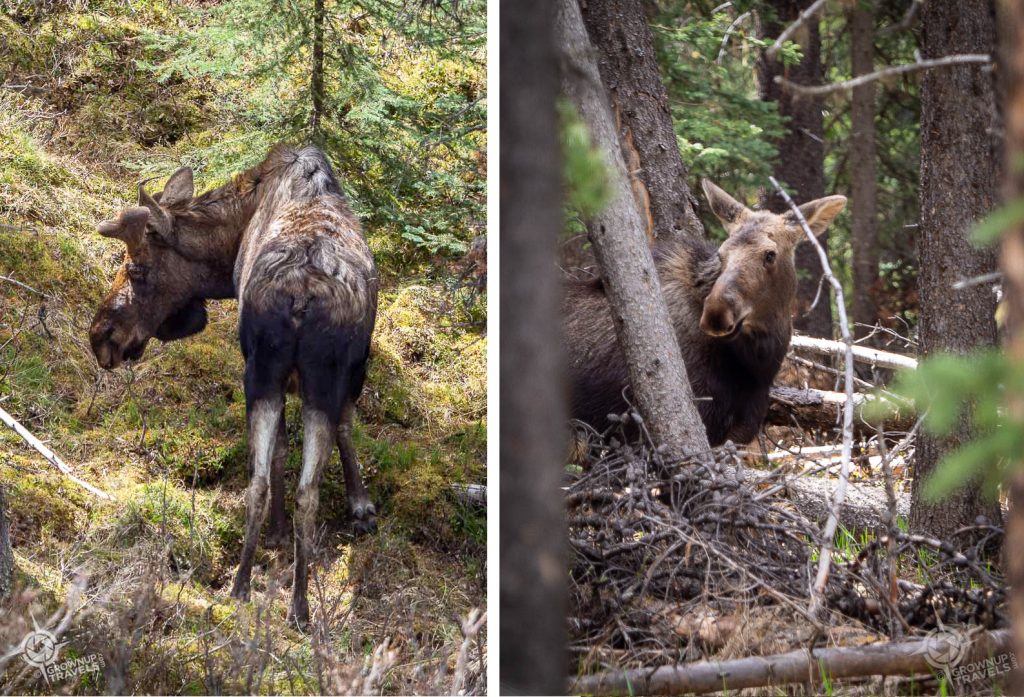
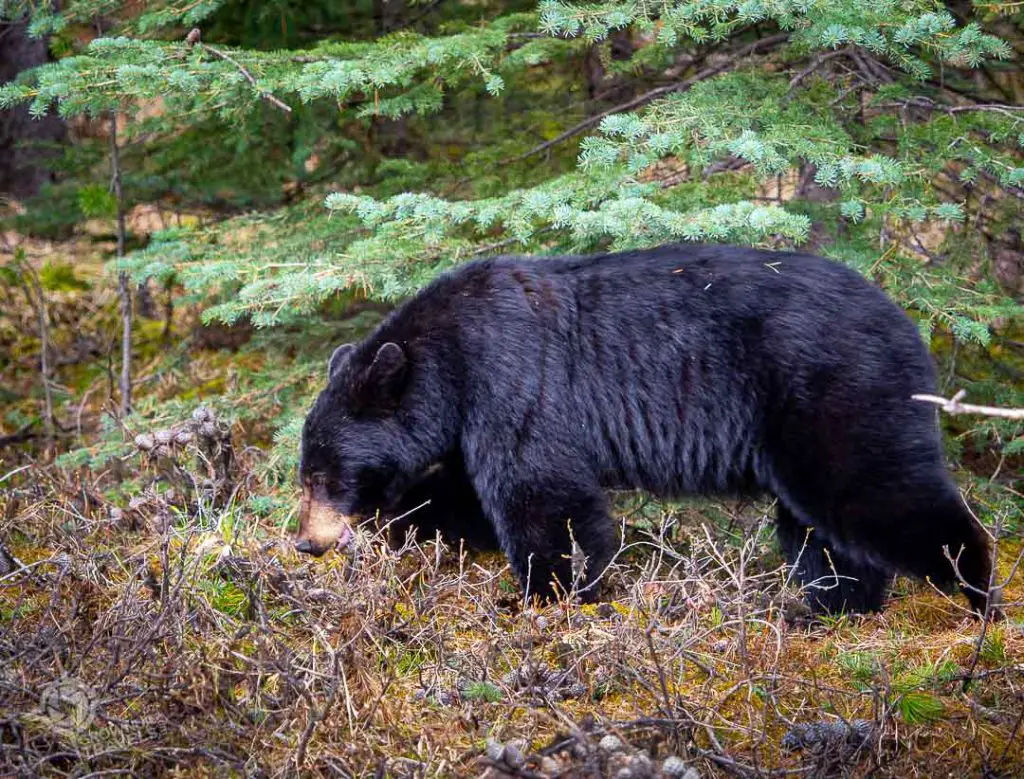
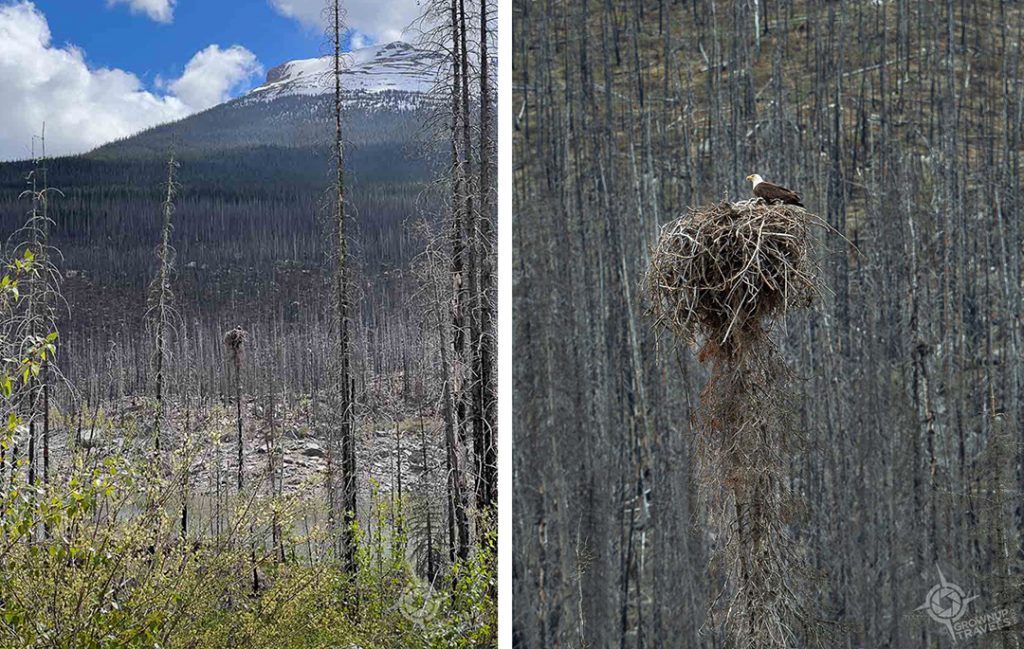
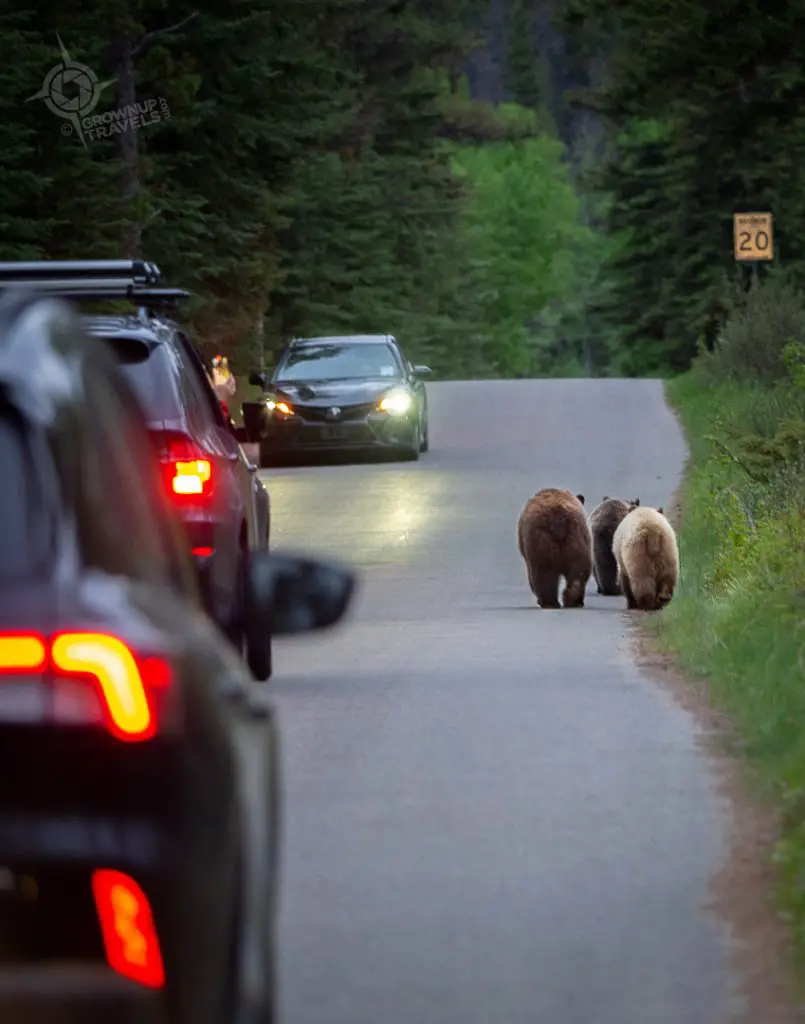
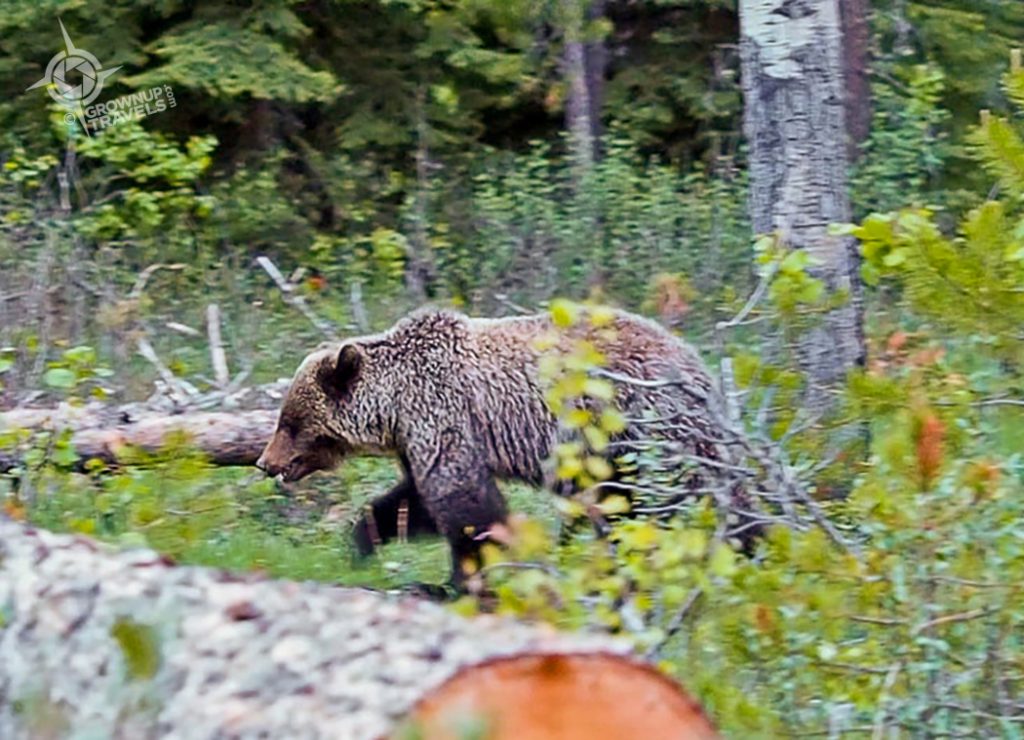
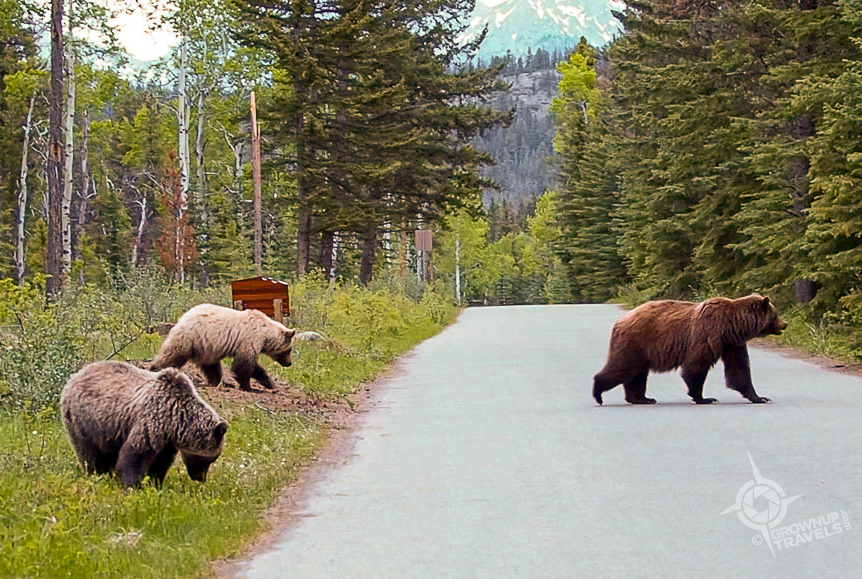
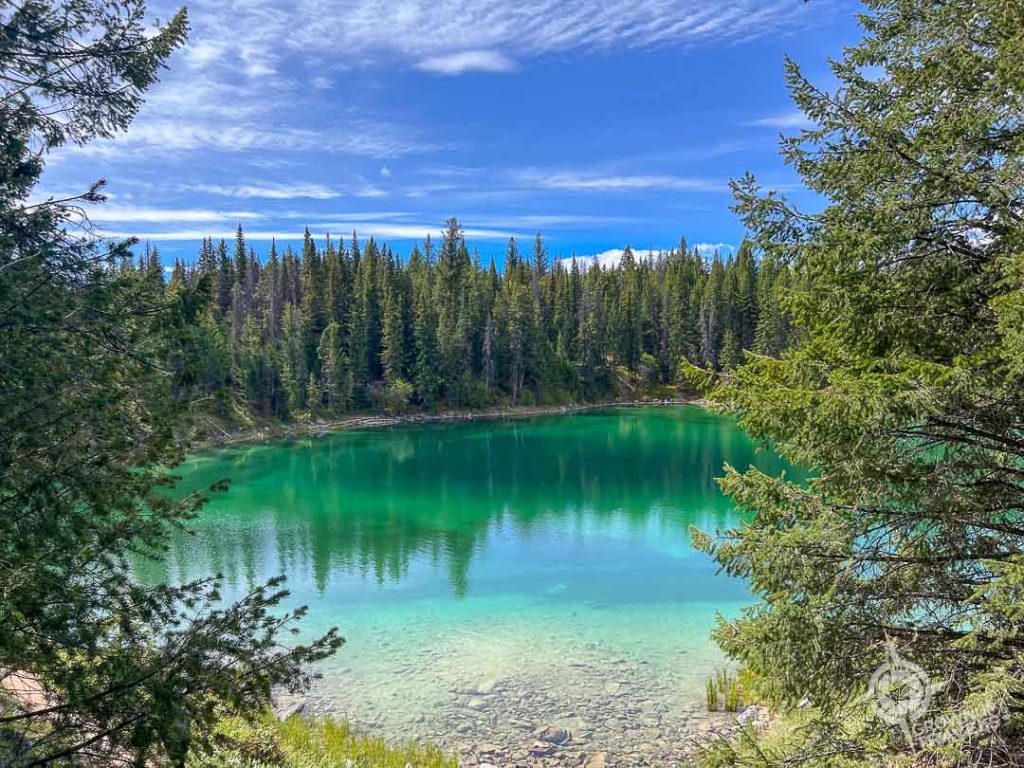
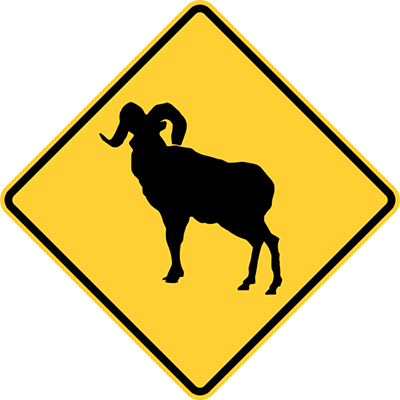
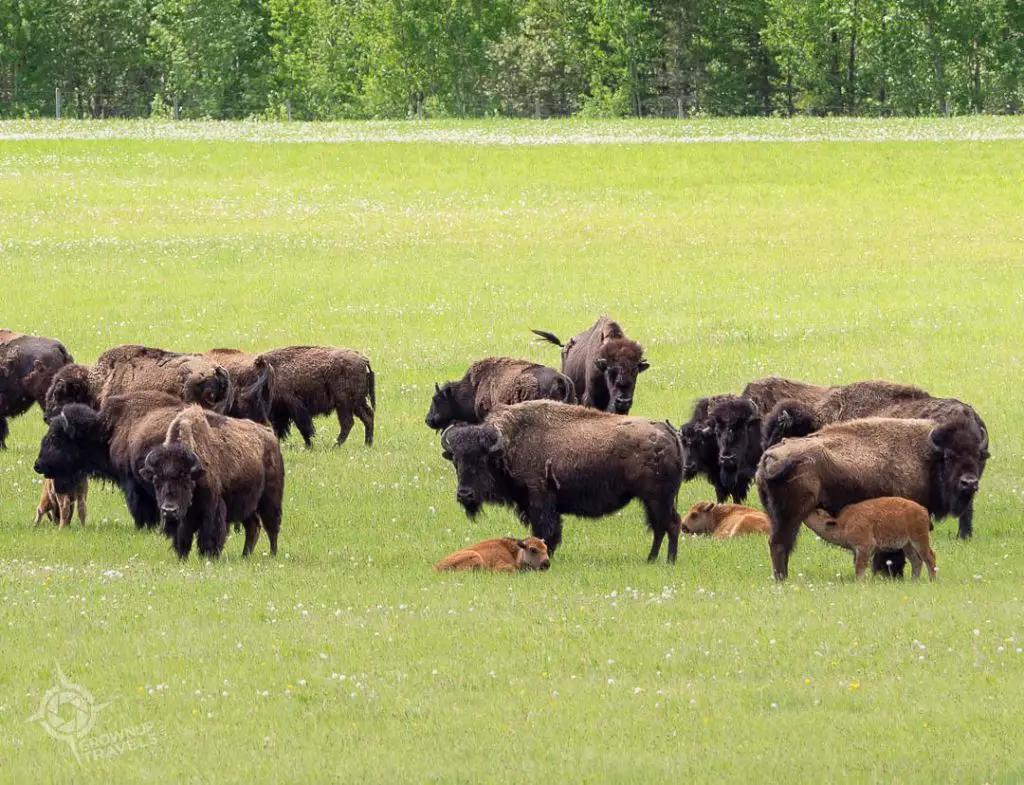
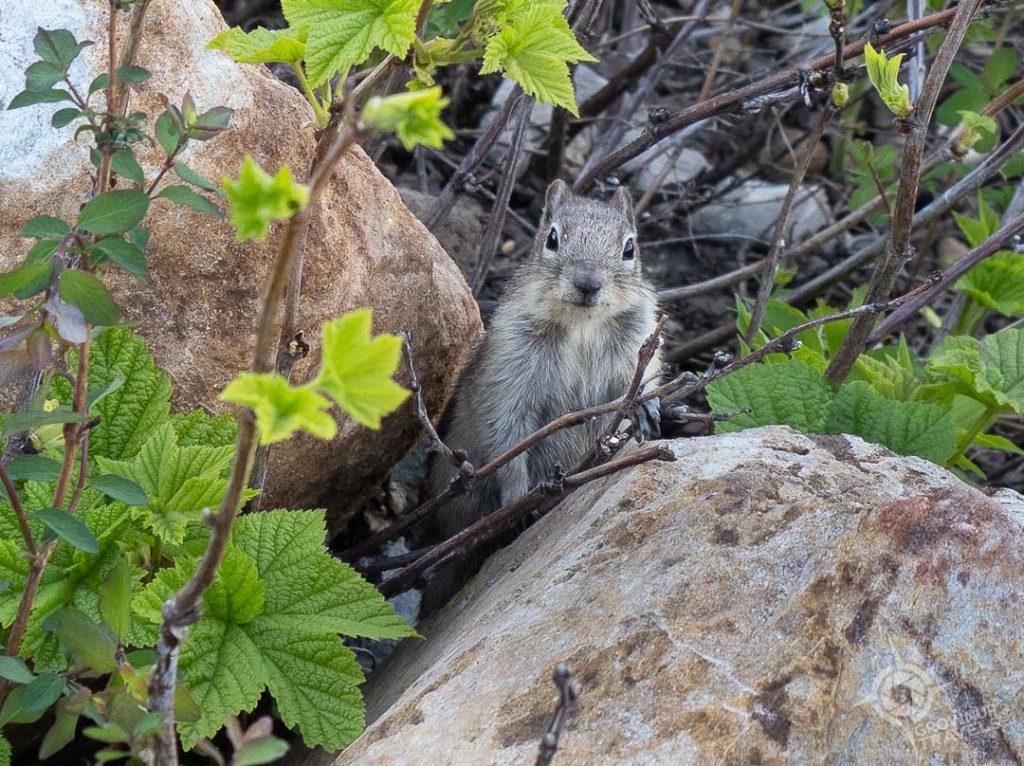
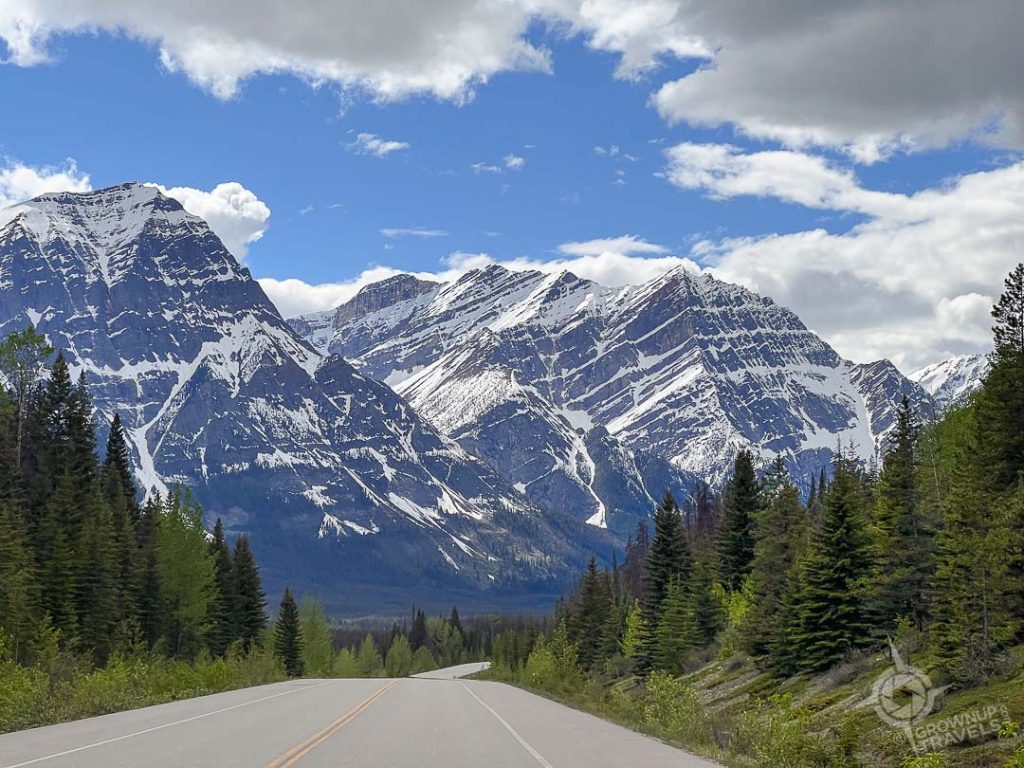
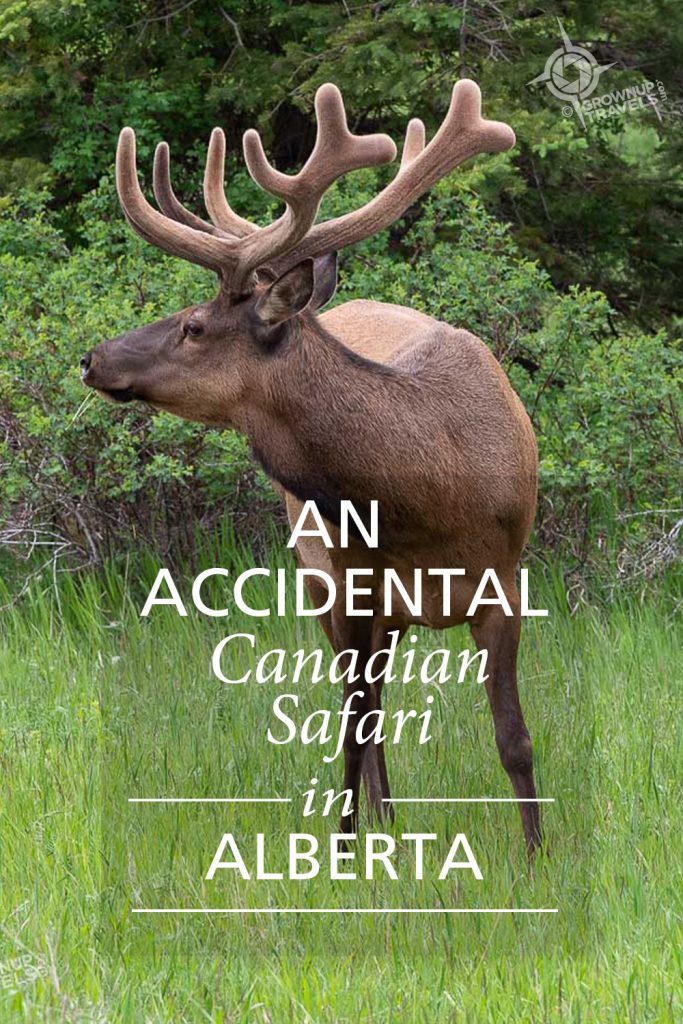

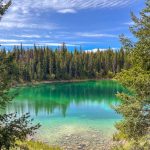
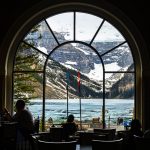
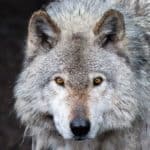
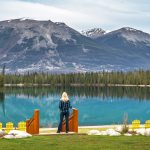






When I first moved to Calgary people who lived there advised me that Calgary has two seasons, Stampede Week and Winter. I realized how true it was my first summer there when I thought it was a nice enough weekend in mid-June to visit Lake Louise, only to discover that it looked like one huge slushy! Glad your travel adventures worked out so well. The pictures are fabulous!
Gotta love mountain weather! I think I would recommend not going before the last 2 weeks of June just to be on the safe side.
Thanks for the comments, too! 🙂
Oh how I miss the mountains and the wildlife so, thanks for sharing these beautiful pictures of your trip. The Rockies are just magnificent and always make me feel in awe of Mother Nature.
It really is one of THE most beautiful parts of Canada. This was Henk’s first trip there and I don’t think it will be his (our) last!
Hi Jane and Henk. Great edition! I took a similar trip about 30 years ago. Your adventure made me want to return as soon as possible. Thanks for the inspiration.
Rico
We’ll be going again for sure, I’m sure, Rico. (gotta see some of those lakes when they aren’t frozen!!!)
Well hello Jane and Henk. Twice I’ve had the good fortune to experience some of what you have presented so eloquently and photographically! Well done!!
Keep well. Dave
Thanks Dave. This was actually Henk’s first time to the Rockies, so that was also why I was trying so hard to time our visit perfectly. I guess I ended up succeeding, for different reasons than I had thought! 🙂
So glad to see how your latest adventure turned out! Talk about lemons to lemonade! Thanks for sharing such beautiful scenery and interesting animal sightings.
So glad to see that your trip turned out so well after all. Talk about lemons to lemonade!, thanks for sharing such beautiful scenery and interesting animal encounters.
I guess the lesson is that it’s never a bad time to go to these National Parks!